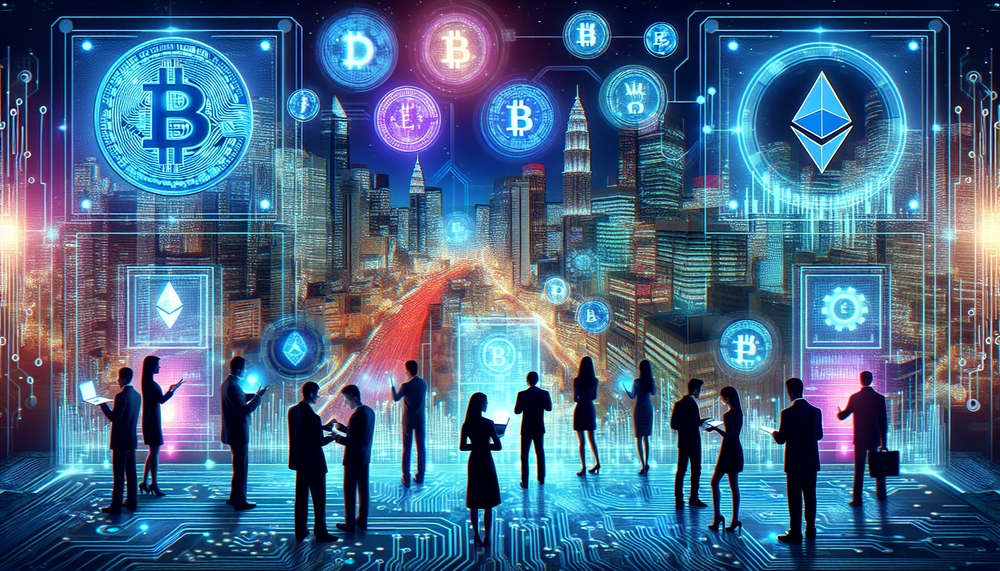Published
- 4 min read
how do daos utilise governance tokens.

How Do DAOs Utilise Governance Tokens? A Deep Dive into Decentralised Governance
Decentralised Autonomous Organisations (DAOs) are revolutionising the way we think about digital governance. By leveraging blockchain technology and smart contracts, DAOs enable people from all over the world to collaborate and make decisions collectively. This new form of organisation is fuelled by governance tokens, which play an essential role in the decision-making process. But how exactly do DAOs utilise governance tokens? Let’s take a closer look.
What are DAOs?
DAOs are organisations that operate autonomously and transparently on the blockchain, governed by smart contracts1. These digital organisations are decentralised, meaning they are not controlled by a single entity. Instead, decision-making powers are distributed among members who possess governance tokens.
The Role of Governance Tokens
Governance tokens are the backbone of any DAO. They are used to vote on proposals that can affect the future of the DAO. This includes decisions about the project’s direction, funding allocation, and even the rules governing the DAO itself2.
In essence, governance tokens are a way to distribute power within a DAO. The more tokens a member holds, the more influence they have over the DAO’s decisions. This aligns the interest of the DAO with its members, as those with a larger stake in the project are more likely to make decisions that benefit the DAO.
How DAOs Utilise Governance Tokens
Here are the primary ways in which DAOs utilise governance tokens:
-
Voting Rights: Governance tokens are used to vote on proposals. Each token represents one vote, and proposals are typically approved based on the majority rule. This ensures that decisions made by the DAO reflect the will of its members3.
-
Delegation: Some DAOs allow token holders to delegate their voting rights to other members. This is useful for members who do not have the time or expertise to evaluate every proposal. Delegation also enables experts in a particular field to have a greater influence on relevant decisions4.
-
Incentives: Governance tokens can also be used as incentives to encourage participation in the DAO. For example, members could be rewarded with additional tokens for contributing to the project or for voting on proposals. This promotes active participation and fosters a sense of community within the DAO5.
-
Access Control: In some DAOs, holding governance tokens might grant access to certain benefits or services. This can include access to premium features, early access to new products, or even a share of the DAO’s revenue6.
The utilisation of governance tokens in DAOs represents a paradigm shift in organisational governance. Instead of a central authority making decisions, power is distributed among the members, leading to a more democratic and transparent governance model.
The Role of AI in DAOs
Artificial Intelligence (AI) is another technology that is increasingly being used in conjunction with DAOs. AI can help automate decision-making processes, making DAOs more efficient and scalable7.
For example, AI can be used to analyse voting patterns and predict the outcome of proposals, helping members make informed decisions. AI can also be used to monitor the DAO’s performance and suggest improvements, further enhancing the DAO’s efficiency.
Conclusion
DAOs and governance tokens are at the forefront of the blockchain revolution, offering a new model for collaboration and decision-making. While the concept is still new and evolving, it holds great promise for a more transparent and democratic future.
Remember, as with any investment, it’s important to do your research and understand what you’re investing in before buying governance tokens.
Footnotes
-
Nakamoto, Satoshi. “Bitcoin: A Peer-to-Peer Electronic Cash System.” Bitcoin.org, 2008, https://bitcoin.org/bitcoin.pdf. ↩
-
Buterin, Vitalik. “DAOs, DACs, DAs and More: An Incomplete Terminology Guide.” Ethereum.org, 2014, https://ethereum.org/en/whitepaper/. ↩
-
Dixon, Chris. “Governance Tokens: A Breakthrough in Digital Coordination.” a16z, 2020, https://a16z.com/2020/12/21/governance-tokens-digital-coordination/. ↩
-
Mougayar, William. “The Business Imperative Behind the Ethereum Vision.” The Business Blockchain, 2016, https://thebusinessblockchain.com/. ↩
-
Mougayar, William. “The Business Imperative Behind the Ethereum Vision.” The Business Blockchain, 2016, https://thebusinessblockchain.com/. ↩
-
Dixon, Chris. “Governance Tokens: A Breakthrough in Digital Coordination.” a16z, 2020, https://a16z.com/2020/12/21/governance-tokens-digital-coordination/. ↩
-
Tapscott, Don, and Alex Tapscott. “How Blockchain Will Change Organizations.” MIT Sloan Management Review, 2017, https://sloanreview.mit.edu/article/how-blockchain-will-change-organizations/. ↩